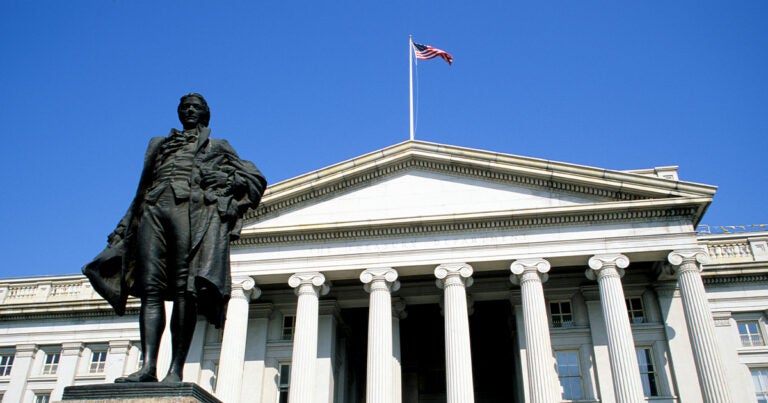The One Big Beautiful Bill Act (OBBBA) will have broad fiscal and economic impacts for the United States. From a fiscal perspective, the bill will add $4.1 trillion to deficits over the next decade, causing the national debt to soar to more than $53 trillion by 2034. The legislation’s sweeping changes to tax and spending policy also have important implications for income distribution across the economy.
The Congressional Budget Office (CBO) and the Joint Committee on Taxation find that the benefits and burdens of the OBBBA are not evenly distributed. Low-income U.S. households will fare much worse than middle- and high-income households, primarily due to the bill’s tax changes as well as reduced spending on Medicaid and the Supplemental Nutrition Assistance Program (SNAP).
The Tax Policy Center (TPC) and the Budget Lab at Yale have drawn similar conclusions:
- TPC finds that the tax cuts would skew towards higher-income households, with 60 percent of the tax benefits going to the top 25 percent of earners.
- The Budget Lab produced a combined estimate of the distributional effects of the 2025 tariff changes and the OBBBA which finds that the bottom 90 percent of households by income level would experience a reduction in income (of 7%) over 2026 to 2034, while the top ten percent would experience an increase in income (of 1.5%) over this period.
Estimates on the budgetary and distributional aspects of the recent reconciliation legislation provide important insights on its impact on the United States population. From a fiscal perspective, the OBBBA legislation adds trillions to our national debt in the years to come and also has meaningful negative implications for lower-income Americans.
Photo by Chip Somodevilla/Getty Images
Further Reading
What Types of Securities Does the Treasury Issue?
Let’s take a closer look at a few key characteristics of Treasury borrowing that can affect its budgetary cost.
Experts Identify Lessons from History for America Today
A distinguished group of experts to evaluate America’s current fiscal landscape with an historical perspective.
Healthcare Spending Will Be One-Fifth of the Economy Within a Decade
Healthcare spending in the United States is rising, with serious implications for the federal budget.


